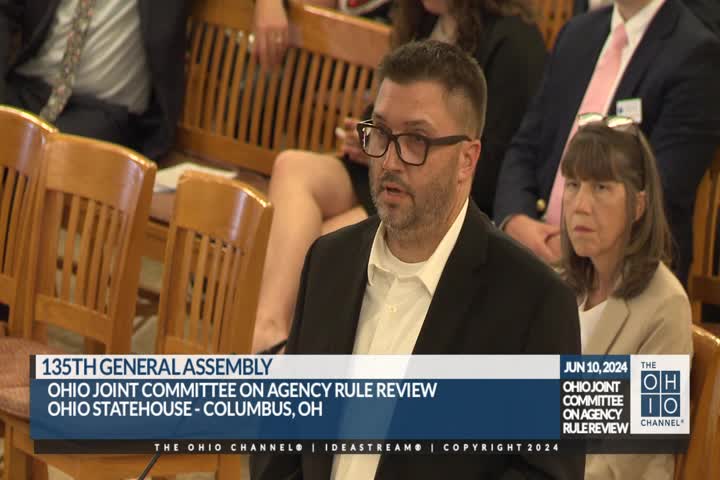Ohio EPA faces backlash over untested mitigation methodology
June 10, 2024 | Joint Committee on Agency Rule Review, Joint, Committees, Legislative, Ohio

This article was created by AI summarizing key points discussed. AI makes mistakes, so for full details and context, please refer to the video of the full meeting. Please report any errors so we can fix them. Report an error »

During a recent government meeting, significant concerns were raised regarding the implementation of Ohio's new stream compensatory mitigation requirements under rule 3745-3204 B. Stakeholders expressed apprehension about the proposed area-based assessment method, which they argue could lead to inflated costs for permit applicants and undermine ecological integrity.
One speaker highlighted the rapid timeline for applying a new methodology that has yet to be fully vetted, warning that it could take three to five years for the assessment to be properly established. The speaker emphasized that rushing this process could result in permit applicants overpaying for mitigation or facing complications due to untested methodologies. They urged caution, advocating for the continuation of the 2016 mitigation guidelines until the new assessment method is thoroughly validated and supported by federal authorities.
Concerns were also raised about the potential for a dual marketplace, where differing methodologies could create confusion and additional costs for taxpayers. The speaker pointed out that the current area-based calculation method could allow for mitigation credits to be inaccurately assessed, leading to significant financial discrepancies.
The discussion underscored the need for careful consideration of the implications of the new assessment method, particularly regarding its alignment with federal mitigation policies established in 2008. Stakeholders called for a more deliberate approach to ensure that the new rules do not compromise the ecological value of Ohio's waterways or impose unnecessary financial burdens on businesses and taxpayers.
As the Ohio EPA moves forward with these changes, the meeting highlighted the importance of thorough testing and validation of new methodologies to ensure they are ready for implementation and capable of accurately reflecting the ecological and economic realities of the state's waterways.
One speaker highlighted the rapid timeline for applying a new methodology that has yet to be fully vetted, warning that it could take three to five years for the assessment to be properly established. The speaker emphasized that rushing this process could result in permit applicants overpaying for mitigation or facing complications due to untested methodologies. They urged caution, advocating for the continuation of the 2016 mitigation guidelines until the new assessment method is thoroughly validated and supported by federal authorities.
Concerns were also raised about the potential for a dual marketplace, where differing methodologies could create confusion and additional costs for taxpayers. The speaker pointed out that the current area-based calculation method could allow for mitigation credits to be inaccurately assessed, leading to significant financial discrepancies.
The discussion underscored the need for careful consideration of the implications of the new assessment method, particularly regarding its alignment with federal mitigation policies established in 2008. Stakeholders called for a more deliberate approach to ensure that the new rules do not compromise the ecological value of Ohio's waterways or impose unnecessary financial burdens on businesses and taxpayers.
As the Ohio EPA moves forward with these changes, the meeting highlighted the importance of thorough testing and validation of new methodologies to ensure they are ready for implementation and capable of accurately reflecting the ecological and economic realities of the state's waterways.
View full meeting
This article is based on a recent meeting—watch the full video and explore the complete transcript for deeper insights into the discussion.
View full meeting
